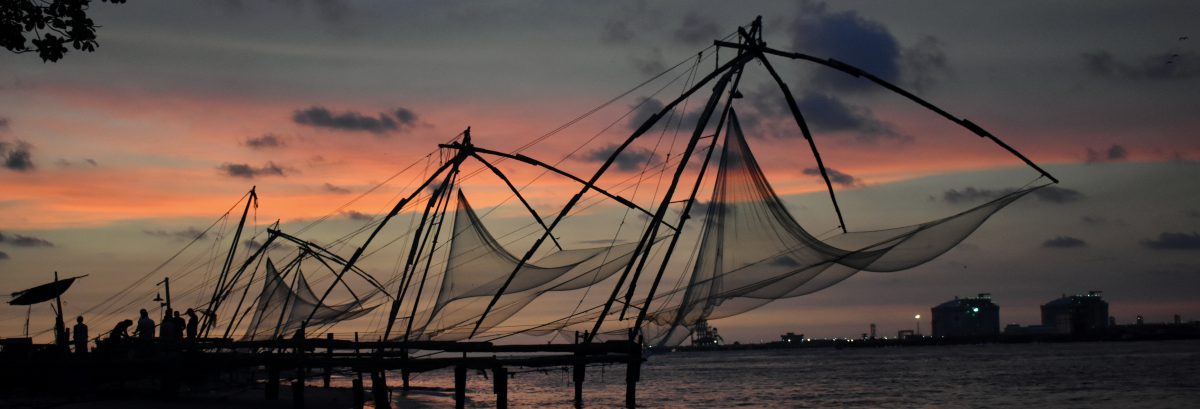It was well past the time for my evening tea, and I had not realized. We just got out of the adventure zone at Thenmala – there was enough chest thumping and adrenaline pumping in the couple of hours that we spent inside the park. For the size it was, the adventure zone could have been maintained a little better. Neither helmets were given for games where you are mid-air, nor life jackets given while boating. And mind you, some games were quite challenging. We were seven of us and only one managed to succeed in all the games.
By the time we got out, we were not only just tired from the games but sweaty too from the humid air that hugs Kerala tight. I needed tea. Cold water simply does not satiate my thirst. I mean, it never does. Even under the heat of sweltering summer, I always needed tea to feel better. It pacifies me and no wonder, I call it the elixir of my life. I told my friends that we must stop somewhere for a cup of tea on the way to our next stop – the Kollam Sengottai branch line. I was assured we would stop at a chai kada as soon as we see one. I sat next to the driver just to make sure that he stopped for tea.
We all were on the way towards our next halt. On the way, I saw Kerala State Transport Corporation buses plying to and from Tenkasi, a small town in the Tirunelveli district of Tamilnadu. I have not been to the town myself, but it reminded me of the Courtallam waterfalls that is situated close to Tenkasi. Since the time of actor M. G. Ramachandran, renowned by his initials as MGR, Tamil cinema has been singing its praise. Both MGR and Courtallam have thus become household names in most Tamil families. I simply forgot about my tea and instead, began humming some songs on Courtallam.
Soon, we reached our destination. With thirteen arches and spanning a length of half a kilometer, the bridge was larger than I expected. I was upset about not having a cup of tea. Suddenly, aroma of fresh prawns deep fried in coconut oil wafted through the air. Oh, My!! Oh, My!! I took long and deep breathes to inhale more of that spicy aroma. It had ginger, garlic, peppercorns, and prawns. Now, I needed more than tea – a plate of chemeen porichathu, as the locals fondly call it. That sumptuous aroma wafted from a chai kada nestled under one of the arches. This is what is called destiny, I thought. It was a small shop run by a couple in their mid-forties. It appeared like the shop also served as their house.
We ordered chai and lime soda, helped ourselves to some chikkis and arisi murukku from the bottles placed on a table in the shop. When I saw that the dish was being prepared in a small kada, I guessed it was being made as an evening snack for the family. I noticed that my friends were not at all excited about the aroma of the prawns fried in coconut oil. I had to let go of my idea of having prawns with chai. The prawns were still being fried and the aroma lured me much more. Well, that’s it.
I initiated a conversation with the chechi.
“Will you be selling those prawns?”
“Illa, for the family.”
“Okay.”.
I smiled at my friends who were already giggling at my uncontrollable urge to taste those prawns.
The hot tea was amazing too. Nothing too special – just the right amount of milk, sugar, and decoction. I had my tea and while cheta was busy making lime soda, I asked chechi.
“Can I take a picture of your chemeen fry?”
She laughed and nodded. I instantly stepped in and took a picture. The prawns were small and had curled in the heat of the coconut oil in which they were being fried. I was reminded of my granny after seeing those prawns with some shards of garlic. Granny has told me that the smallest of prawns often tastes the best. It was then time for us to leave when someone called me from the back.
Chechi handed me a plate with some prawns and asked me to taste it. My joy knew no bounds. I took a mouthful of prawns and my eyes lit up. It was heavenly. The prawns were crisp on the outside and soft inside. There was the right amount of salt and spice. Again, nothing too complex about it but it was such a splendid preparation. Noticing my contented look, my friends laughed uncontrollably and joyously.
I thanked chechi and would thank her another million times for that delicacy.
That’s the thing about some days – it ends in a simple way with simple people, the heart fulfilled with contentment.
